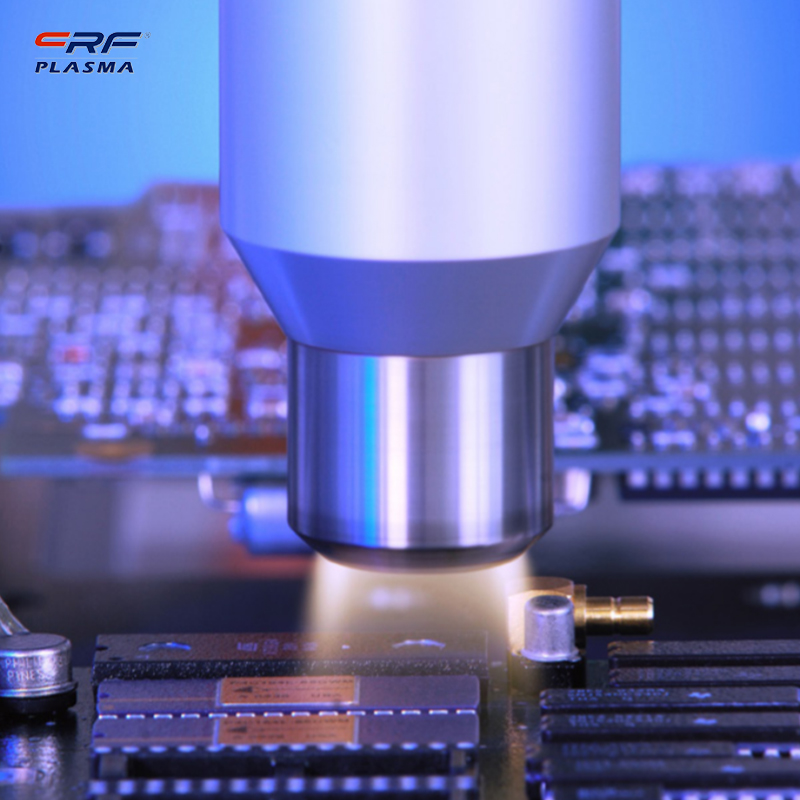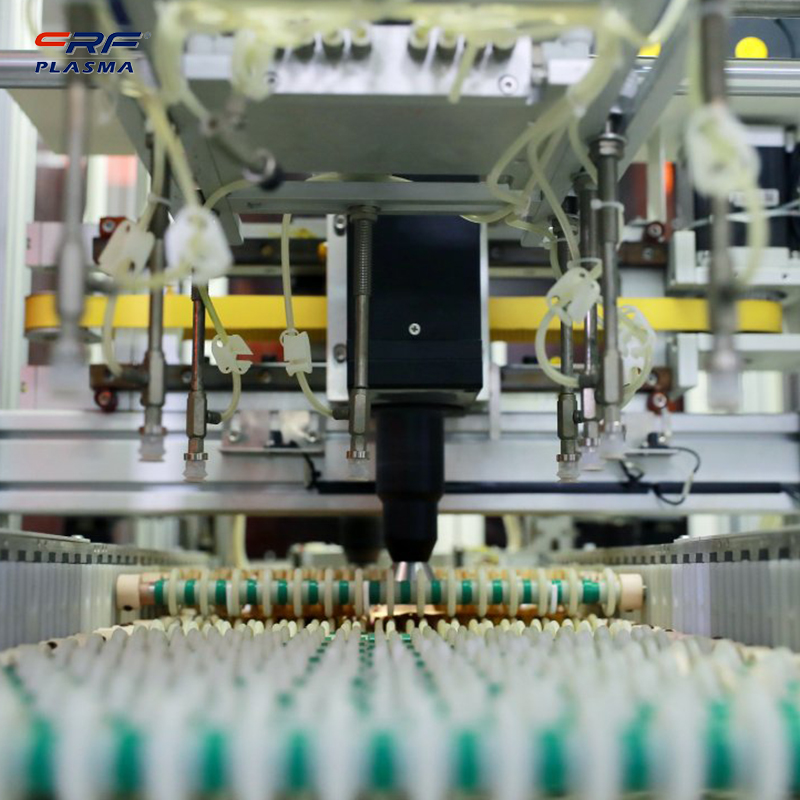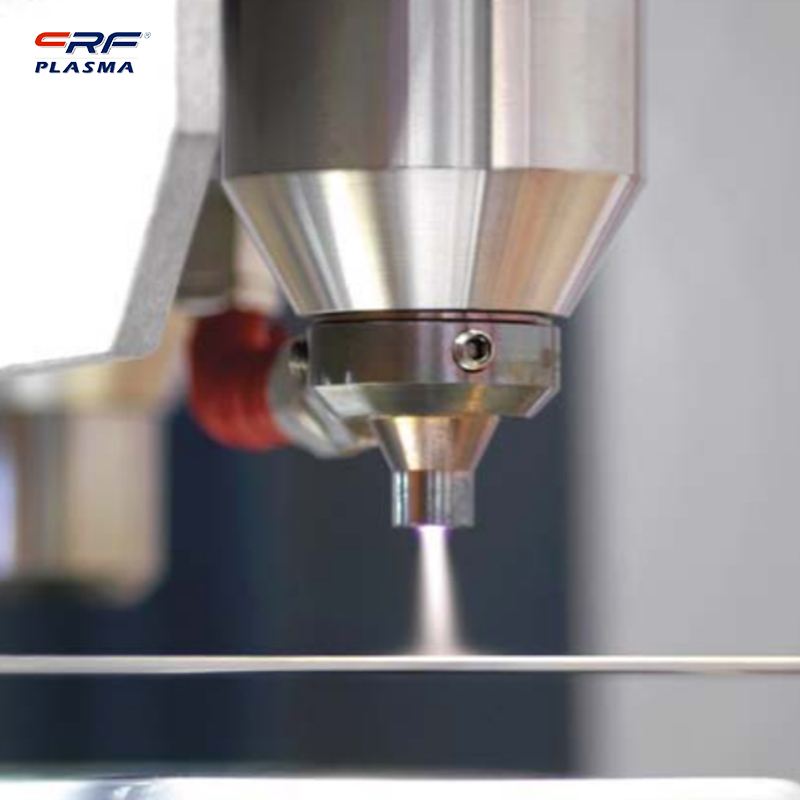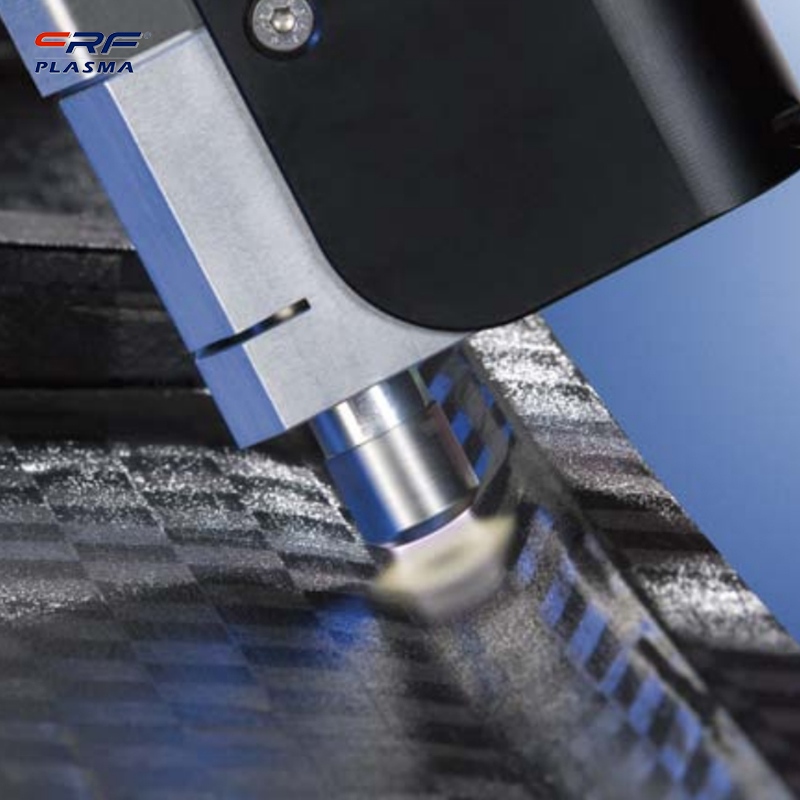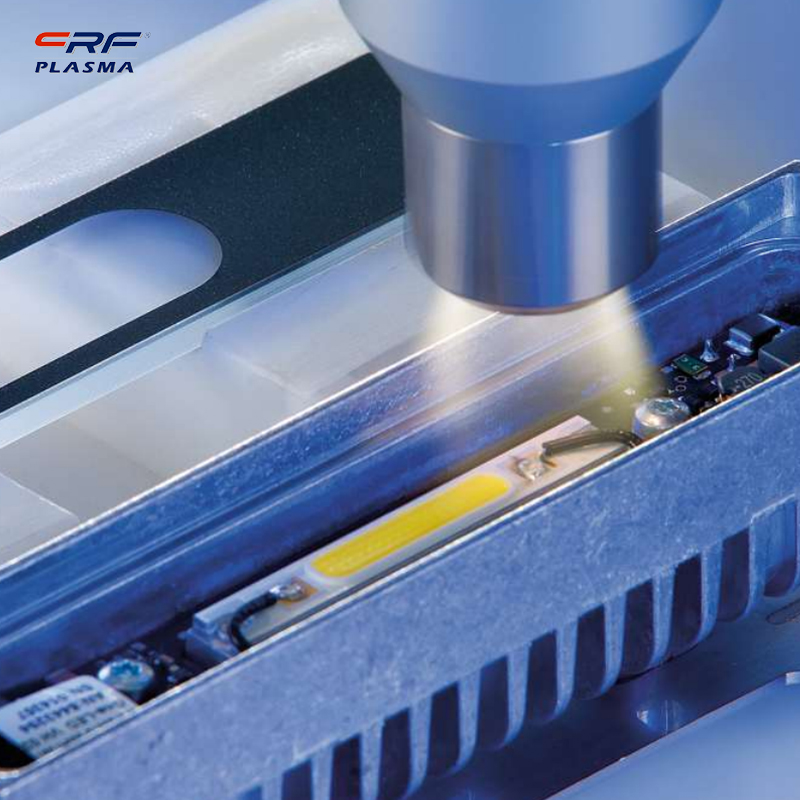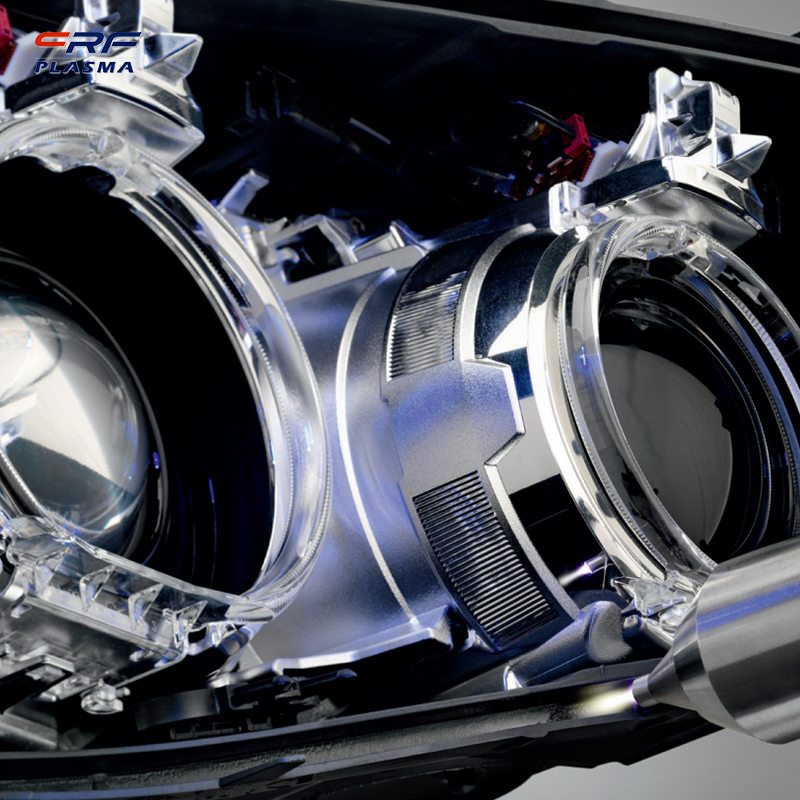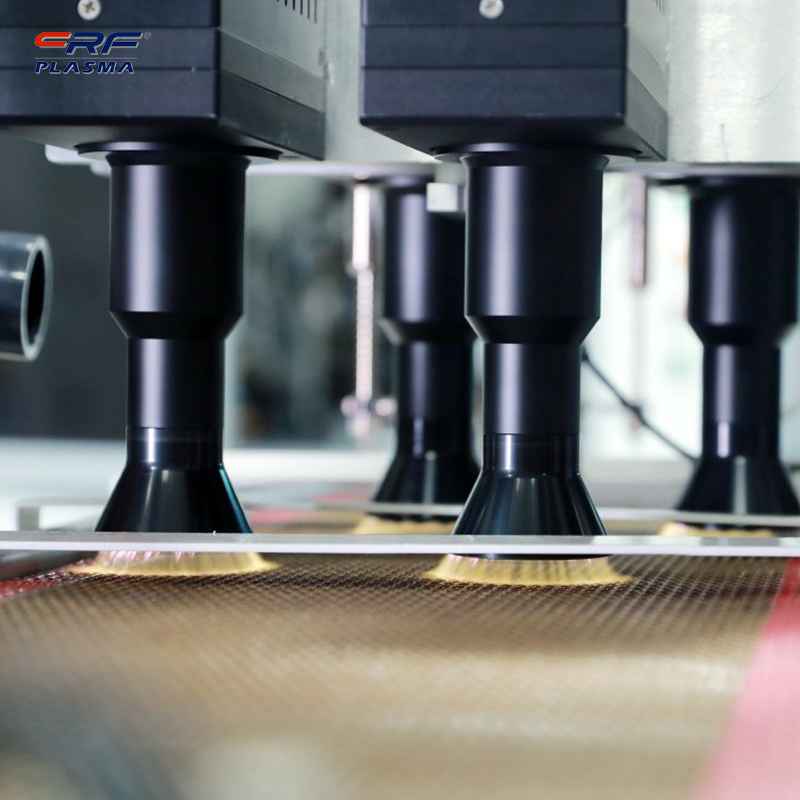
Welcome to Shenzhen Sing Fung Intelligent Manufacturing Co., Ltd.
E-mail:shaobo@sfi-crf.com
Principle of the use of the major functional properties of plasma in different industries
- Categories:Technical Support
- Author:Plasma cleaning machine-CRF plasma plasma equipment-plasma surface treatment machine manufacturer-chengfeng intelligent manufacturing
- Origin:
- Time of issue:2022-10-15
- Views:
(Summary description) Low temperature plasma + photocatalysis technology refers to filling the plasma reactor with TiO2 catalysts. When the high energy particles generated by the reactor decompose organic pollutants into small molecules, these substances are further oxidized and decomposed into inorganic small molecules under the action of catalysts to purify and separate the exhaust gases. The photocatalyst and the plasma discharge interact with each other, the catalyst can change the nature of the plasma discharge to produce new active substances with stronger oxidation; while the plasma discharge will affect the chemical composition, specific surface area and catalytic structure of the catalyst to improve its catalytic activity, which greatly enhances the efficiency of low temperature plasma + photocatalytic technology to purify VOCs. The combined technology is more suitable for treating organic waste gas with large air volume and low concentration, and has the advantages of low operating cost, fast reaction rate and no secondary pollution. Plasma surface modification uses high-energy active particles in the plasma to bombard the surface of the material, giving it new surface properties, as only the surface is acted on, the original physical properties of the material remain unchanged. It should be noted that plasma has no requirements for substrate materials and can be used for both surface modification of metallic materials and insulating materials. Plasma cleaning is the process of cleaning a product to improve its ability to print or bond. The purpose of plasma cleaning is to remove organic surface contaminants. Plasma treats the surface of your product to accept the printed adhesive or ink. Often on PTFE or plastics, plasma surface modification actually changes the surface of the material, leaving free radicals and causing it to bond to the adhesive or ink When the plasma interacts with the surface of the object to be cleaned, on the one hand, the use of plasma or plasma-activated chemically active substances and the material surface dirt for chemical reactions, such as the use of active oxygen in the plasma and the material surface of organic matter for oxidation reaction. The plasma acts with the organic dirt on the material surface and decomposes the organic dirt into carbon dioxide, water, etc. for discharge. In the use of plasma for material modification or cleaning, usually use low-temperature plasma, gas temperature is not more than 100 °, which is macroscopic; but from a microscopic point of view, when the plasma and the material surface chemical or physical reaction, if the energy gathered in a local area, once the material treatment time is too long, it may cause damage to some material surface. Plasma etching technology for fiber structure analysis is the earliest application of plasma treatment in the textile industry, and has become a mature technology, another application for the study of textile material modification, surface modification of textile materials with plasma, graft polymerization and plasma polymerization deposition, etc., to change the surface of textile materials (hydrophobic), increase the adhesion, improve the printing and dyeing properties.
Principle of the use of the major functional properties of plasma in different industries
(Summary description) Low temperature plasma + photocatalysis technology refers to filling the plasma reactor with TiO2 catalysts. When the high energy particles generated by the reactor decompose organic pollutants into small molecules, these substances are further oxidized and decomposed into inorganic small molecules under the action of catalysts to purify and separate the exhaust gases. The photocatalyst and the plasma discharge interact with each other, the catalyst can change the nature of the plasma discharge to produce new active substances with stronger oxidation; while the plasma discharge will affect the chemical composition, specific surface area and catalytic structure of the catalyst to improve its catalytic activity, which greatly enhances the efficiency of low temperature plasma + photocatalytic technology to purify VOCs. The combined technology is more suitable for treating organic waste gas with large air volume and low concentration, and has the advantages of low operating cost, fast reaction rate and no secondary pollution.
Plasma surface modification uses high-energy active particles in the plasma to bombard the surface of the material, giving it new surface properties, as only the surface is acted on, the original physical properties of the material remain unchanged. It should be noted that plasma has no requirements for substrate materials and can be used for both surface modification of metallic materials and insulating materials.
Plasma cleaning is the process of cleaning a product to improve its ability to print or bond. The purpose of plasma cleaning is to remove organic surface contaminants. Plasma treats the surface of your product to accept the printed adhesive or ink. Often on PTFE or plastics, plasma surface modification actually changes the surface of the material, leaving free radicals and causing it to bond to the adhesive or ink
When the plasma interacts with the surface of the object to be cleaned, on the one hand, the use of plasma or plasma-activated chemically active substances and the material surface dirt for chemical reactions, such as the use of active oxygen in the plasma and the material surface of organic matter for oxidation reaction. The plasma acts with the organic dirt on the material surface and decomposes the organic dirt into carbon dioxide, water, etc. for discharge.
In the use of plasma for material modification or cleaning, usually use low-temperature plasma, gas temperature is not more than 100 °, which is macroscopic; but from a microscopic point of view, when the plasma and the material surface chemical or physical reaction, if the energy gathered in a local area, once the material treatment time is too long, it may cause damage to some material surface.
Plasma etching technology for fiber structure analysis is the earliest application of plasma treatment in the textile industry, and has become a mature technology, another application for the study of textile material modification, surface modification of textile materials with plasma, graft polymerization and plasma polymerization deposition, etc., to change the surface of textile materials (hydrophobic), increase the adhesion, improve the printing and dyeing properties.
- Categories:Technical Support
- Author:Plasma cleaning machine-CRF plasma plasma equipment-plasma surface treatment machine manufacturer-chengfeng intelligent manufacturing
- Origin:
- Time of issue:2022-10-15 11:28
- Views:
Low temperature plasma + photocatalysis technology refers to filling the plasma reactor with TiO2 catalysts. When the high energy particles generated by the reactor decompose organic pollutants into small molecules, these substances are further oxidized and decomposed into inorganic small molecules under the action of catalysts to purify and separate the exhaust gases. The photocatalyst and the plasma discharge interact with each other, the catalyst can change the nature of the plasma discharge to produce new active substances with stronger oxidation; while the plasma discharge will affect the chemical composition, specific surface area and catalytic structure of the catalyst to improve its catalytic activity, which greatly enhances the efficiency of low temperature plasma + photocatalytic technology to purify VOCs. The combined technology is more suitable for treating organic waste gas with large air volume and low concentration, and has the advantages of low operating cost, fast reaction rate and no secondary pollution.
Plasma surface modification uses high-energy active particles in the plasma to bombard the surface of the material, giving it new surface properties, as only the surface is acted on, the original physical properties of the material remain unchanged. It should be noted that plasma has no requirements for substrate materials and can be used for both surface modification of metallic materials and insulating materials.
Plasma cleaning is the process of cleaning a product to improve its ability to print or bond. The purpose of plasma cleaning is to remove organic surface contaminants. Plasma treats the surface of your product to accept the printed adhesive or ink. Often on PTFE or plastics, plasma surface modification actually changes the surface of the material, leaving free radicals and causing it to bond to the adhesive or ink
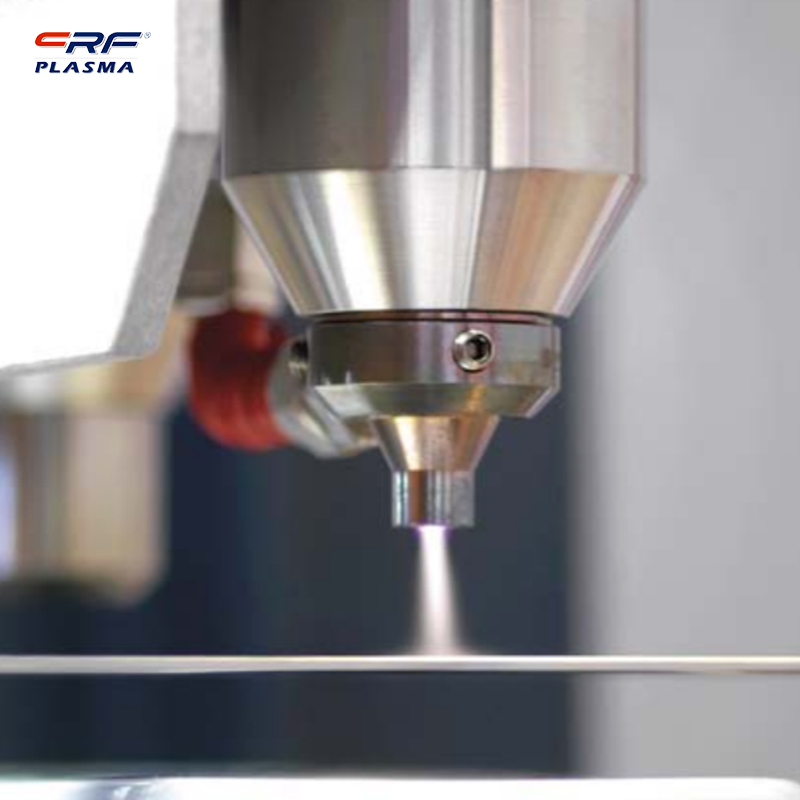 When the plasma interacts with the surface of the object to be cleaned, on the one hand, the use of plasma or plasma-activated chemically active substances and the material surface dirt for chemical reactions, such as the use of active oxygen in the plasma and the material surface of organic matter for oxidation reaction. The plasma acts with the organic dirt on the material surface and decomposes the organic dirt into carbon dioxide, water, etc. for discharge.
When the plasma interacts with the surface of the object to be cleaned, on the one hand, the use of plasma or plasma-activated chemically active substances and the material surface dirt for chemical reactions, such as the use of active oxygen in the plasma and the material surface of organic matter for oxidation reaction. The plasma acts with the organic dirt on the material surface and decomposes the organic dirt into carbon dioxide, water, etc. for discharge.
In the use of plasma for material modification or cleaning, usually use low-temperature plasma, gas temperature is not more than 100 °, which is macroscopic; but from a microscopic point of view, when the plasma and the material surface chemical or physical reaction, if the energy gathered in a local area, once the material treatment time is too long, it may cause damage to some material surface.
Plasma etching technology for fiber structure analysis is the earliest application of plasma treatment in the textile industry, and has become a mature technology, another application for the study of textile material modification, surface modification of textile materials with plasma, graft polymerization and plasma polymerization deposition, etc., to change the surface of textile materials (hydrophobic), increase the adhesion, improve the printing and dyeing properties.
Scan the QR code to read on your phone

TEL:0755-3367 3020 / 0755-3367 3019

E-mail:sales-sfi@sfi-crf.com

ADD:Mabao Industrial Zone, Huangpu, Baoan District, Shenzhen







